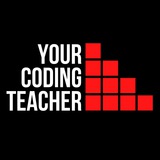It is often easier to not do something dumb than it is to do something smart
It's never been easier to learn to code, with so many resources available to learn from.
Is your program stuck in an infinite loop or just taking long? This is called the halting problem. Alan Turing proved that a general algorithm to solve the halting problem for *all possible program-input pairs* cannot exist.
Difference between mutex and semaphore - Mutexes only provide mutual exclusion (only 1 thread access the critical section) - Semaphores are signaling mechanisms (for example, to signal that something is complete) Binary semaphores can be used as mutexes (but not viceversa)
Problems that start with: "find" - The first n elements that - All ways to - In how many ways - The n-th - The most optimal way - The minimum/maximum/shortest path Are potential candidates for a dynamic programming solution
Procedural programming is a programming paradigm, based on the concept of the procedure calls: a type of routine that contains a series of steps to be carried out Some procedural programming languages include Fortran, ALGOL, COBOL, BASIC, Pascal, C and Java
Small-talk was developed in 1972 by Alan Kay, Adelle Goldberg and Dan Ingalls at Xerox Smalltalk was the first language to popularize object-oriented programming (Simula 67 was the first language to introduce OOP concepts). 'Hello World!' printNl !
Design patterns in 1 tweet Builder. Separates object creation from its representation Ex: Have the flexibility to build them like this (Java) Meal m = new MealBuilder.setMainCourse(mainCourse).setDrink(drink).setX()... .build(); Instead of a cascade of constructors
IAM in GCP & AWS: - Service account~IAM role & instance profile - User identity: managed outside VS inside IAM - Policy: list of bindings (members to a role) VS list of permissions in JSON - (Predefined) Set of permissions: (Predefined) Role ~ (Managed) Policy
Google Cloud encrypts data both: - At rest (data stored on disk) and - In transit (data traveling in the network) using AES implemented via Boring SSL.
C Program to count elements. Can you find the bug? for (i=0; i<numRows; i++) for (j=0; j<numCols; j++); numElements++;
"In man-machine symbiosis, it is man who must adjust. The machines can't." - Alan J. Perlis
"Your obligation is that of active participation. You should not act as knowledge-absorbing sponges, but as whetstones on which we can all sharpen our wits" - Edsger W. Dijkstra
Design patterns in 1 tweet Adapter: Match interfaces of different classes Ex: a charger that can connect to a power plug in India (interface 1) will need a power adapter to connect to power plugs in the UK (interface 2). The charger (class) does not need to modification
Design patterns in 1 tweet Chain of responsabily: Pass a request through a chain of objects Ex: Exception handling in Java. If method X can't handle an exception, it will pass it up the chain to the method that called method X
2 ways options to define startup scripts in GCP: - When you are creating your instance in the Google Console, there is a field to paste your code - Using the metadata server URL to point to a script stored in GCS This latter is preferred.
Document and graph databases don't enforce a schema But applications usually assume some structure, which brings the question: If schemas are defined explicitly (when writing) or implicitly (when retrieving data) Are they really "Schema-less"?
Thinking you can learn coding/data science by watching someone else do it in a tutorial Is like thinking you will get abs by watching someone else work out.
